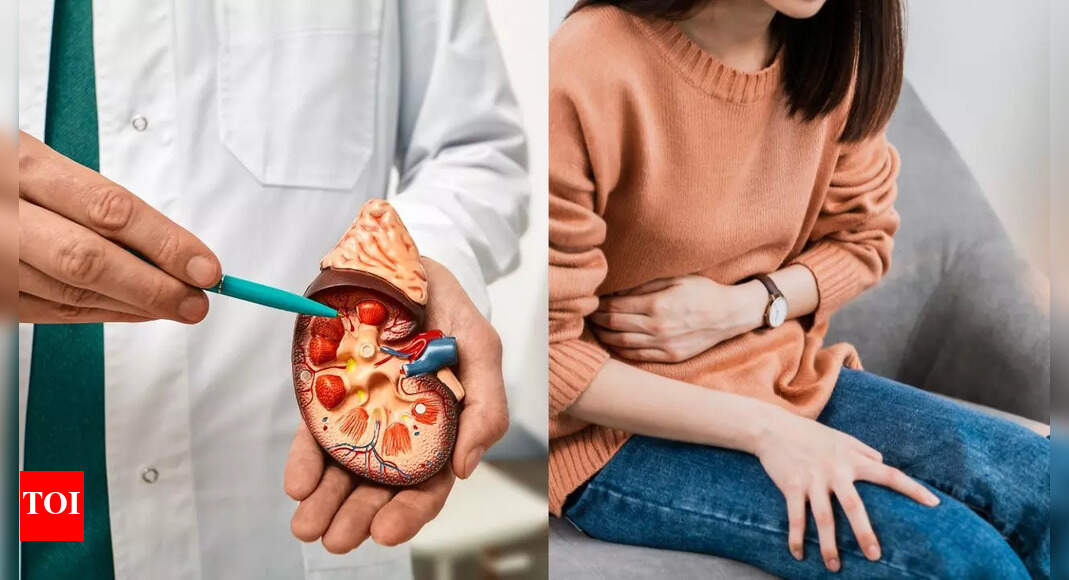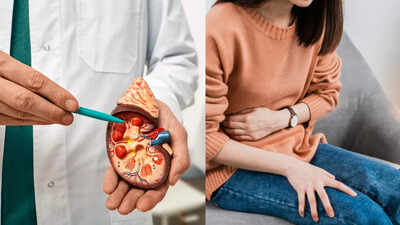The kidneys are vital organs responsible for filtering waste, balancing fluids, and regulating blood pressure. When kidney function declines, the body often sends out early warning signs, not always near the kidneys themselves. Kidney damage signs can include discomfort in various body parts that hurt when kidneys are affected, such as the lower back, abdomen, groin, legs, and even the chest. These unusual kidney pain locations may indicate issues like kidney stones, infections, or chronic kidney disease. Recognising these early symptoms of kidney damage is crucial for timely diagnosis and treatment, preventing further progression of kidney-related complications. Take a look.
Body aches that could signal kidney damage
According to a study published by the National Institute of Medicine, it is important to identify the early signs and symptoms of kidney damage, as timely detection can significantly slow the progression of chronic kidney disease. One of the lesser-known but important early indicators is unexplained body pain, particularly in areas such as the lower back, legs, or sides. Recognising these subtle warning signs early can lead to quicker intervention and improved kidney health outcomes.
Poll
Have you ever experienced unexplained pain that made you concerned about your kidney health?
1. Lower back (Flank area)
One of the most common and well-recognised signs of kidney damage is pain in the lower back, specifically in the flank area, the region between your lower ribs and hips, on either side of the spine.
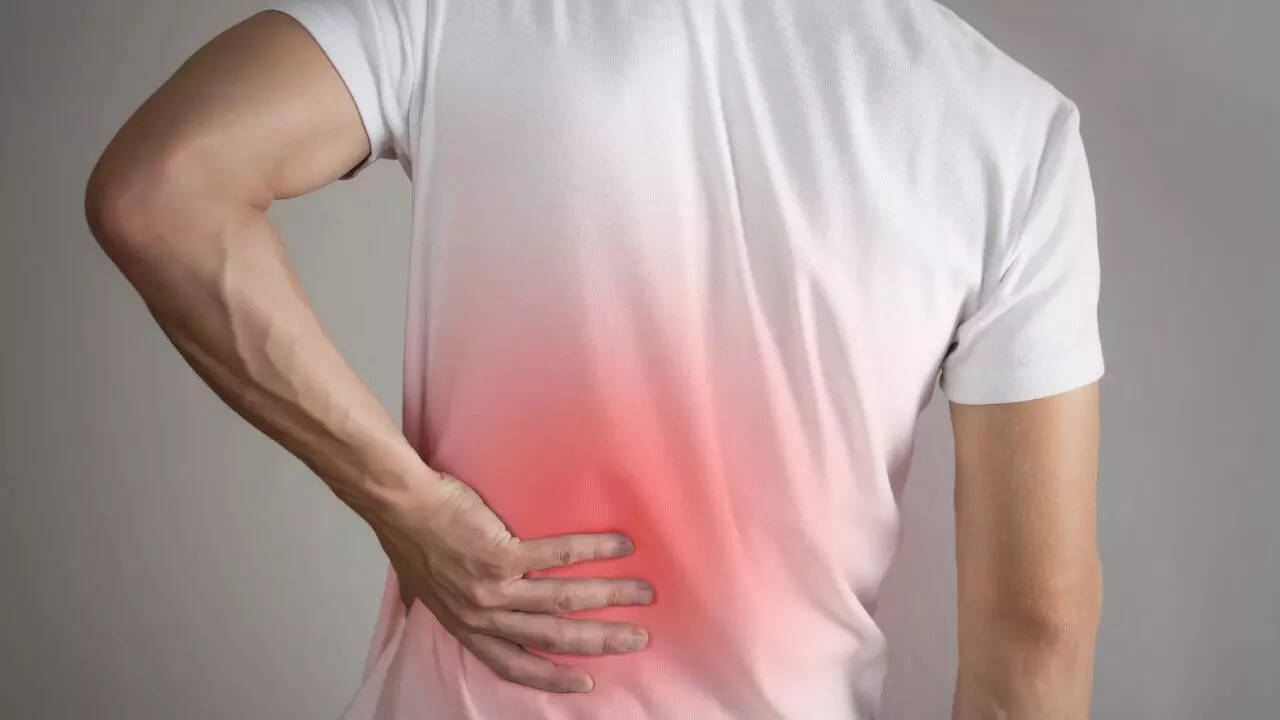
What the pain feels like:Dull, aching sensation on one or both sides of the backSharp, stabbing pain that comes in waves (especially with kidney stones)Pain that does not improve with rest or changes in postureWhy it happens:When the kidneys are inflamed, infected, or blocked (as with kidney stones or hydronephrosis), they can cause pain that radiates to the back. This discomfort is often misinterpreted as muscular back pain, but kidney pain typically doesn’t get better with massage, rest, or stretching.
2. Abdomen
Though not always directly associated with kidneys, abdominal pain can be a sign of underlying kidney problems. The kidneys are located near the back of the abdominal cavity, and issues like infections or blockages can refer pain forward.
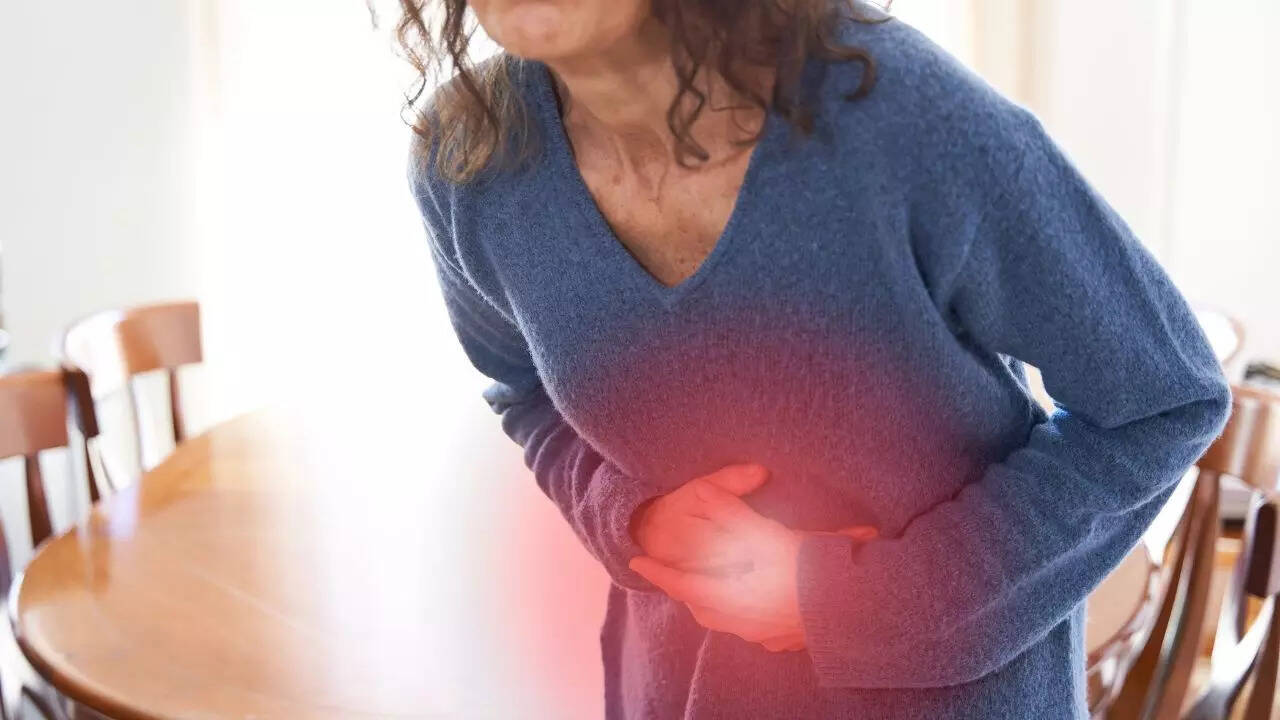
What the pain feels like:Cramping or discomfort in the lower abdomenPressure or fullness in the bellySudden sharp pain, often paired with nausea (especially with kidney stones)Why it happens:Kidney infections (pyelonephritis), stones, or urine retention can create pressure in the kidneys and ureters, which may trigger pain that radiates into the abdominal region.
3. Groin and pelvic area
Pain that radiates from the kidneys can also extend downward into the groin or pelvic region. This is particularly common with kidney stones or severe infections. . In some cases, the pain may be sharp, sudden, and accompanied by nausea, fever, or changes in urine colour, indicating a serious underlying condition.
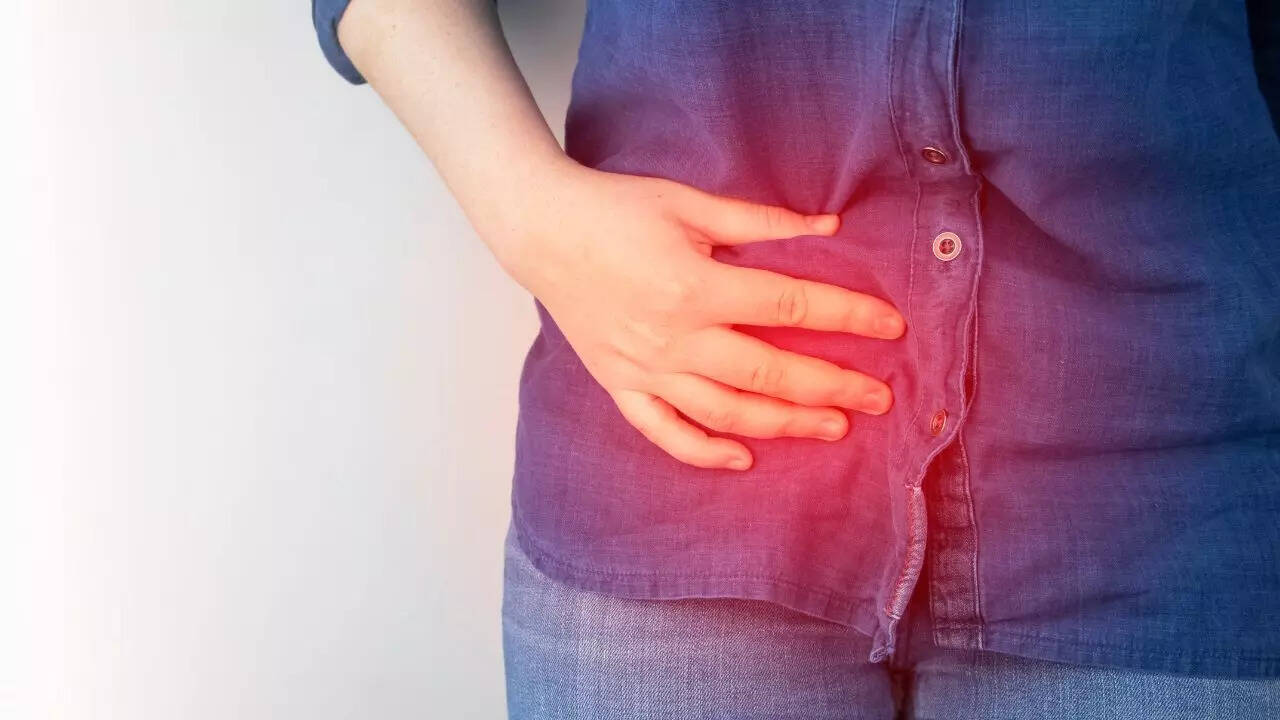
What the pain feels like:Sharp or stabbing groin pain that comes and goesA constant, dull ache in the pelvic areaDiscomfort during urination or sudden urge to urinateWhy it happens:The ureters, which connect the kidneys to the bladder, pass through the lower abdomen into the pelvic region. When a stone or obstruction travels through the ureter, it can irritate surrounding nerves and tissues, leading to referred groin pain.Also See: Kidney damage is silent, until it’s permanent: 7 red flags you must not ignore
4. Legs, ankles, and feet
Though kidneys are located in the upper abdomen, leg pain or discomfort in the lower limbs can also signal kidney issues, particularly due to fluid retention or nerve dysfunction associated with advanced kidney disease.
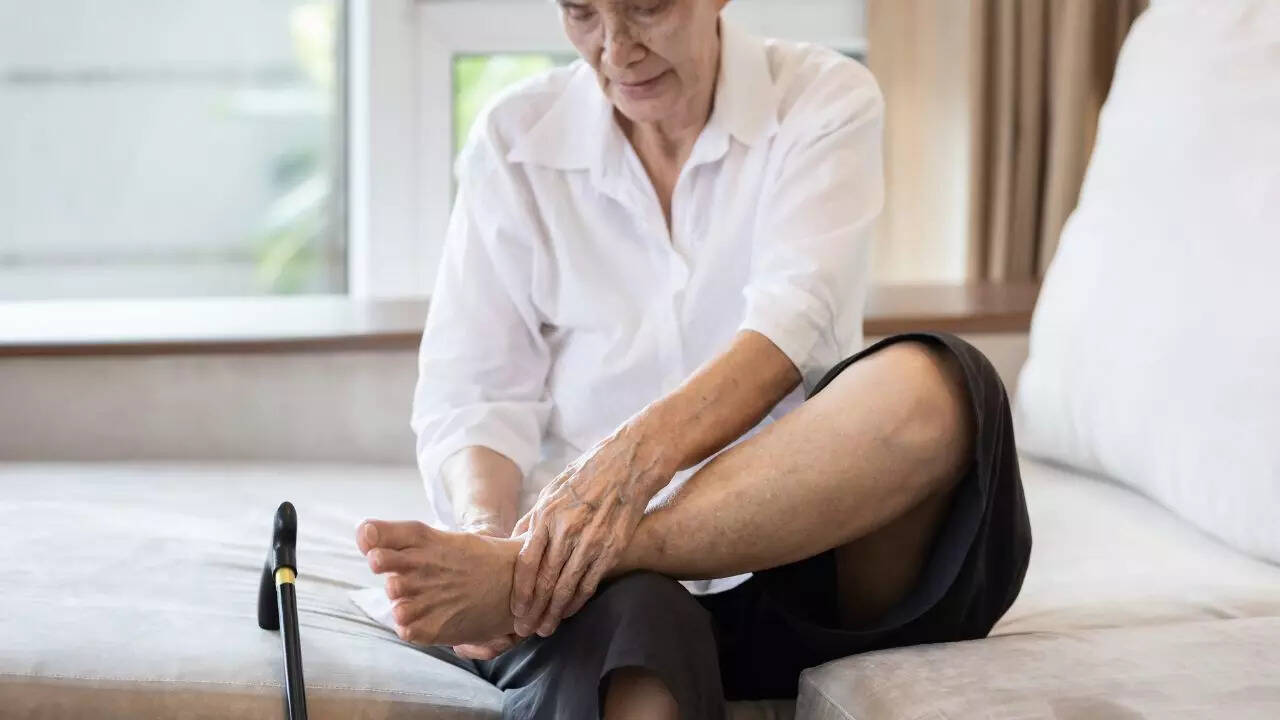
What the pain feels like:Aching or cramping in the calves or thighsSwelling and tightness in the ankles or feetBurning or tingling sensations in the legsWhy it happens:When kidneys fail to properly remove excess fluid and waste from the body, swelling (oedema) can occur in the legs and feet. Additionally, uremic neuropathy, a nerve condition caused by waste buildup in the blood, can lead to pain or numbness in the lower limbs.
5. Chest and rib area
In certain cases, kidney damage can contribute to chest or rib pain, though not directly caused by the kidneys themselves, it often stems from related complications such as fluid buildup, electrolyte imbalances, or pericarditis (inflammation of the heart lining due to kidney failure).
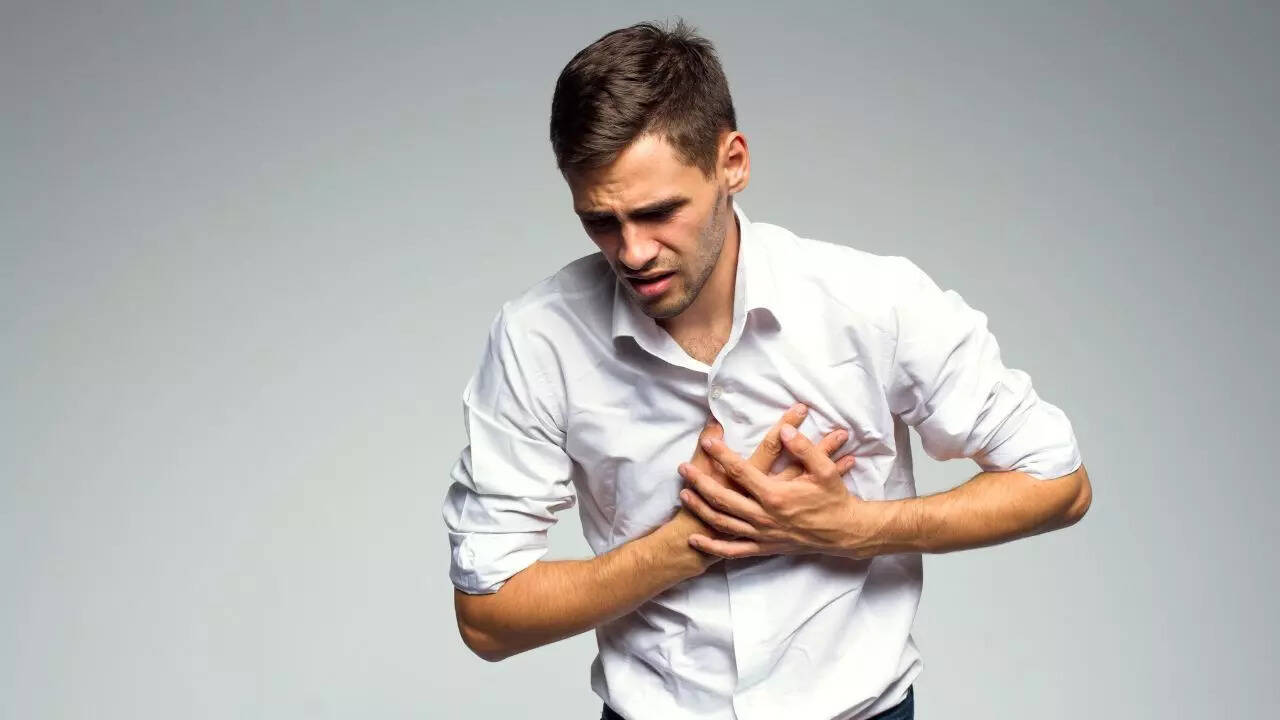
What the pain feels like:Pressure or tightness in the chestPain beneath the rib cageDiscomfort that worsens with breathing or lying downWhy it happens:In advanced kidney disease, fluid can accumulate around the lungs or heart, causing pain or difficulty breathing. Electrolyte disturbances can also cause muscle cramps or spasms in the chest wall or rib area.
Frequently Asked Questions (FAQs)
1. Can kidney damage cause pain in other parts of the body besides the back?Yes, kidney damage can cause pain in various body parts including the abdomen, groin, legs, and chest. This is because complications like infections, stones, or fluid retention can affect nearby nerves and tissues, leading to referred pain.2. How can I differentiate kidney pain from regular back pain?Kidney pain is usually located in the flank area (side of the lower back) and tends to be persistent, sharp, or aching. Unlike muscular back pain, kidney pain does not improve with rest, stretching, or changes in posture and may be accompanied by other symptoms like fever or urinary changes.3. When should I see a doctor if I experience pain related to my kidneys?You should seek medical attention immediately if you experience severe flank pain, pain radiating to the groin, difficulty urinating, blood in urine, swelling in legs or ankles, or chest pain. Early diagnosis and treatment can prevent kidney damage from worsening.Disclaimer: This article is for informational purposes only and does not constitute medical advice. Always consult a qualified healthcare professional before making any changes to your health routine or treatment.Also read | Colon cancer risk factors: What increases your chances?
